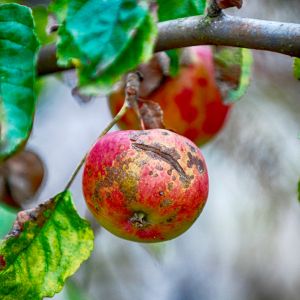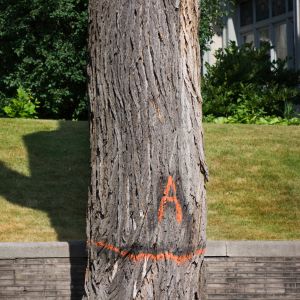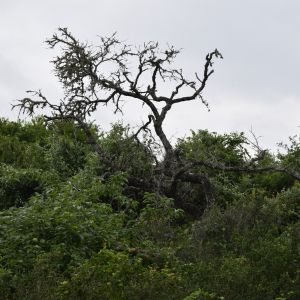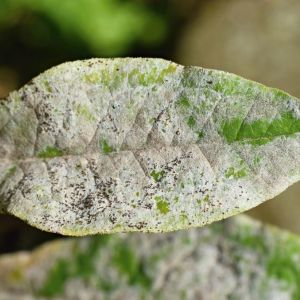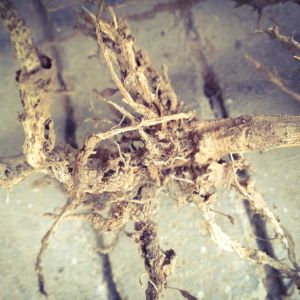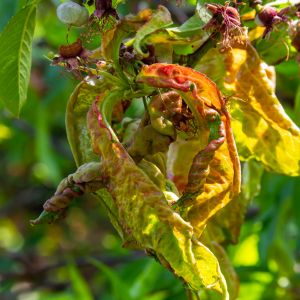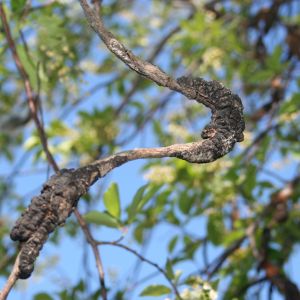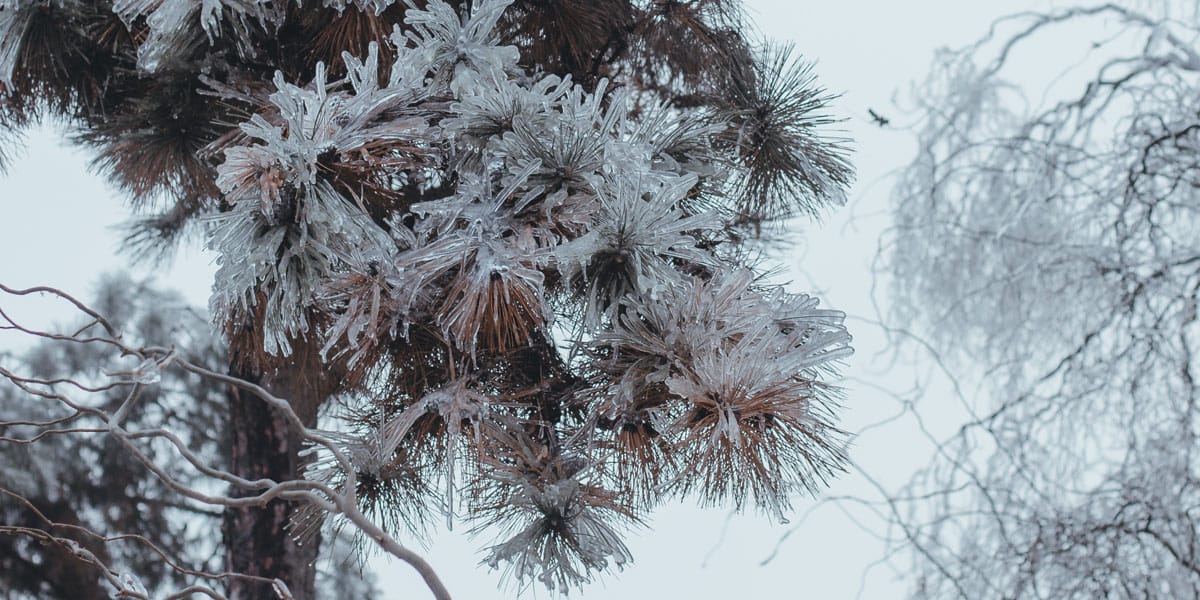Have you noticed brown, curled leaves or cracking bark on your beloved maple, oak, or elm trees recently? These could be telltale signs of fungal infection. Fungal diseases are silently attacking trees across Morristown and the surrounding region at an alarming rate, posing a major threat to the beauty and longevity of landscapes in our area. Left untreated, some fungal infections can destroy a tree within only a few years.
These signs of distress in our trees can be disheartening, but there’s good news: early detection and proper care can make a world of difference. In this article, we guide you through the ins and outs of these fungal diseases. You’ll learn how to spot them early, understand why they occur, and most importantly, discover practical steps for treating and preventing them. With this knowledge, you can protect your trees and keep your landscape healthy and vibrant, ensuring the natural beauty of our neighborhoods for years to come.
Fungal Tree Diseases in New Jersey
When we think about the health of our trees, it’s often the visible threats like storms or pests that come to mind first. However, there’s a more subtle but equally significant risk lurking in your trees: fungal diseases. These infections can quietly wreak havoc on our beloved fruit and shade trees.
Here are some of the common fungal diseases that you might encounter in Morris, Essex, Union and Somerset counties. Each fungal disease presents its own challenges but, with the right knowledge, proactive measures, and early intervention, you can protect your trees and ensure they continue to thrive. Understanding these diseases and their symptoms can help in early detection and effective disease management, ensuring the health and beauty of your trees.
Apple Scab (Venturia inaequalis)
Primarily affecting apple and crabapple trees, Apple Scab is a common sight in New Jersey. This disease manifests as velvety, dark spots on leaves and fruit, which can lead to premature leaf drop and a less vibrant tree canopy. Although it’s more disfiguring than deadly, Apple Scab can weaken trees over time, making them more susceptible to other issues.
Prevention: Plant scab-resistant apple varieties. Implement good sanitation practices by cleaning up fallen leaves and debris, especially in the fall and before bud break in spring.
Management: Fungicide applications are most effective when started in spring at bud break and continued at regular intervals, especially during rainy periods.
Cedar-Apple Rust (Gymnosporangium juniperi-virginianae)
A unique disease, Cedar-Apple Rust, requires two hosts to complete its life cycle: junipers and apple or crabapple trees. It creates bright orange, gelatinous galls on juniper trees in spring, which release spores that infect apple and crabapple trees. On apple trees, it causes yellow spots on leaves and can diminish the health and fruit production of the tree.
Prevention: If feasible, remove alternate hosts (junipers) within a several-hundred-yard radius. Choose rust-resistant varieties of apple and crabapple trees.
Management: Apply fungicides to apple and crabapple trees during the period of spore release from junipers, which typically occurs in early spring in New Jersey.
Dutch Elm Disease (Ophiostoma novo-ulmi)
Dutch Elm Disease is a notorious fungal disease that primarily targets elm trees. It’s spread by bark beetles and through root grafts between adjacent trees. The fungus blocks the water-conducting vessels of the tree, causing wilted, yellow, and brown leaves, often leading to the tree’s death. Elm trees in Morristown’s urban and suburban landscapes are particularly vulnerable to this disease, making early detection and management critical.
Prevention: Prune elms during the dormant season (late fall through winter) to avoid attracting beetles. Maintain tree health to increase resistance.
Management: Infected trees should be removed quickly to prevent spreading the disease. Fungicide injections can be effective for protection but must be applied before the tree is infected and require professional application.
Oak Wilt (Bretziella fagacearum)
Oak Wilt is a serious disease that predominantly affects oak trees, particularly the red oak family. It’s caused by a fungus carried by a beetle that borer into oak trees. The fungus invades and disables the water-conducting systems of oak trees. Symptoms include wilting leaves that turn from green to a dull bronze. Unfortunately, once infected, red oaks can die within a few weeks, while white oaks might fight the disease longer but often succumb eventually.
Prevention: Avoid pruning or wounding oaks from April to July, which is the peak period for beetle activity in New Jersey. This minimizes the risk of attracting disease-spreading beetles.
Management: Infected trees should be promptly removed and destroyed to prevent spread. Fungicide injections might be helpful but require professional application. Establishing a buffer zone by trenching around the infected tree can also help prevent root spread to nearby oaks.
Dogwood Anthracnose (Discula destructiva)
Specifically targeting dogwoods, this fungal disease is a common sight in our area, causing leaf spots, stem cankers, and twig dieback. In wet and cool spring weather, it can lead to significant defoliation and branch dieback. Over time, the repeated defoliation and twig dieback can severely weaken the tree, leading to its death. This disease has been a significant concern for dogwood populations in the northeastern United States.
Prevention: Plant-resistant dogwood species. Prune to promote air circulation throughout the canopy and remove any infected branches or foliage. Clean up fallen leaves and debris. Promote tree vigor through proper watering, mulching, and fertilization. Rake and dispose of fallen leaves to minimize the source of infection.
Management: Apply fungicides in early spring as new leaves emerge, and continue through the wet spring months, as needed. Fungicide treatments are more preventive than curative so it’s important to start before symptoms appear.
DID YOU KNOW? Crosses between the Asian Dogwood (Cornus kousa) and American Dogwood (Cornus florida), known as Rutger’s Hybrids (developed right here in New Jersey!), have greater disease resistance to dogwood anthracnose and powdery mildew. Some specific resistant varieties from these hybrids include ‘Aurora’, ‘Celestial’, ‘Galaxy’, ‘Ruth Ellen’, ‘Star Dust’, and ‘Stellar Pink.’
Anthracnose is a common fungal disease that affects a wide variety of trees in our area besides dogwoods, including sycamores and maples. It causes dark, sunken lesions on leaves, stems, flowers, and fruits. While not typically fatal, Anthracnose can lead to significant leaf drop and weaken the overall vigor of the tree.
Powdery Mildew (Various species)
Powdery Mildew is a common fungal problem affecting a variety of plants, including trees like oaks, maples, and dogwoods. It’s easily identifiable by its distinctive white, powdery coating on leaves and sometimes stems. While generally not fatal, Powdery Mildew can reduce a tree’s vigor and aesthetic appeal, leading to discolored leaves and stunted growth.
Prevention: Plant resistant tree varieties and ensure good air circulation around trees. Avoid excessive nitrogen fertilizer which can promote susceptible new growth.
Management: Apply fungicides as soon as symptoms are noticed, typically during dry, warm weather in summer in New Jersey.
Verticillium Wilt (Verticillium dahliae and V. albo-atrum)
Verticillium Wilt is a soil-borne fungal disease that can attack a wide range of trees, with Eastern Redbud (Cercis canadensis) and Maples (Acer sp.) among the most affected tree species. It invades through the roots and clogs the tree’s vascular system, causing wilting, yellowing, and browning of leaves, often on one side of the tree first. Often, infected branches will show bright green or dark brown bands, streaks or flecks if cut. This disease can be particularly devastating as it can lead to the eventual death of the tree.
Prevention: Choose resistant tree varieties and ensure good drainage in planting areas. Avoid planting susceptible trees in areas where the disease has been previously identified.
Management: There is no effective chemical control. Focus on improving tree vigor and removing severely affected limbs.
Phytophthora Root Rot (Phytophthora spp.)
Phytophthora Root Rot is another soil-borne fungal disease that affects a wide range of trees and shrubs, including but not limited to oaks, pines, and hemlocks. This disease thrives in poorly drained or over-irrigated soils, causing root decay, reduced vigor, leaf yellowing, and dieback. It can be particularly destructive in landscaped areas where soil conditions favor the pathogen’s growth.
Prevention: Ensure good drainage in planting areas as Phytophthora thrives in waterlogged soil. Avoid over-watering and reduce soil compaction to promote healthy root growth.
Management: There’s no effective chemical treatment once a tree is infected. Focus on improving drainage and soil conditions. Infected trees may need to be removed to prevent spreading the disease to other plants.
Beech Bark Disease (Nectria spp.)
Beech Bark Disease, affecting American beech trees, is a two-part disease involving an insect (the beech scale) and a fungus (Nectria spp.). The scale insect creates wounds on the bark, allowing the fungus to invade, causing cankers and eventually killing the tissue. Over time, this can lead to tree mortality. Signs of infestation include sparse foliage, woolly beech scale insects (usually found in bark cracks), small red fungal fruiting bodies, and round sunken or raised calluses.
Beech Bark Disease has been a growing concern in forests and wooded areas in New Jersey, particularly in the northern part of our state.
Prevention: Monitor for the presence of beech scale insects, as they are the vectors for the disease. Maintain tree health to increase resistance.
Management: There is currently no effective treatment for the fungal component of the disease. Control of the beech scale through horticultural oils or insecticides can be helpful.
Peach Leaf Curl (Taphrina deformans) and Brown Rot (Monilinia spp)
Peach Leaf Curl affects peach and nectarine trees and is evident from its red, puckered, or curled leaves during early spring. The disease can lead to significant leaf drop, reduced fruit quality, and overall vigor loss in trees. Brown rot is a common peach tree disease that affects fruit, shoots, and blossoms. It can spread rapidly, causing fruit to turn brown and moldy, rotting on the tree. Shoots die back, resulting in reduced fruit production.
Prevention: Plant resistant varieties if available. Clean up and destroy fallen leaves and fruit. Prune infected branches and remove affected fruit promptly. Ensure good air circulation throughout the canopy.
Management: Apply a fungicide spray late in the dormant season before the bud swell for leaf curl prevention. In New Jersey, this is typically done in late winter or very early spring. For brown rot, use fungicides as a preventive measure during the growing season.
DID YOU KNOW? New Jersey is one of the top growers of peaches in the United States, ranking in the top five in production most years. The state annually harvests approximately 60 million pounds of peaches during the late June through September season. Of the 100 varieties of New Jersey peaches, John Boy is the long-standing favorite. See more New Jersey peach facts >>
Black Knot (Apiosporina morbosa)
This disease primarily targets members of the Prunus genus, such as cherry and plum trees. It is easily identifiable by its dark, swollen, and knotty growths along the branches. Left unchecked, Black Knot can severely distort and weaken branches, leading to a decline in tree health and, in severe cases, death.
Prevention: Prune and destroy infected branches during the dormant season (late fall and winter). Regularly inspect trees for early signs of the disease.
Management: Prune out infected branches at least 4-6 inches below the knot. Fungicide applications in the spring can help protect new growth, especially during wet conditions.
Don’t Let Fungal Disease Take Over Your Trees!
For accurate timing and application rates of fungicides and other treatments, it’s important to consult with a professional tree care service, like Alpine Tree, whose professionals can offer tailored advice based on the specific conditions and species present in your landscape. Our team of experts is well-versed in the specific challenges faced by trees in our region and we offer a range of services tailored to prevent and manage fungal tree diseases.
Don’t wait until it’s too late. Regular inspections and preventive care are essential in safeguarding your trees against these fungal diseases.
Call Alpine Tree today at 973-964-7798 for more information or to schedule a consultation. Our certified arborists are ready to provide you with the best care and advice, from selecting disease-resistant varieties to implementing effective treatment plans. Together, we can keep New Jersey’s trees healthy, strong, and beautiful for generations to come.





